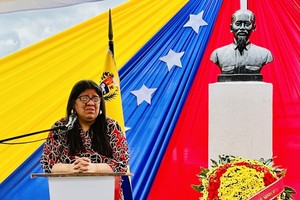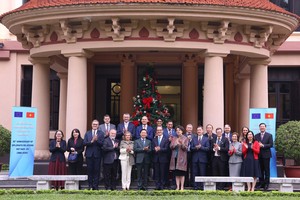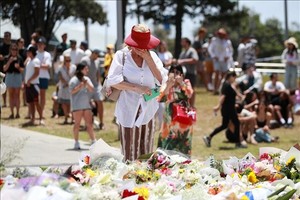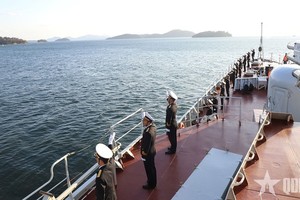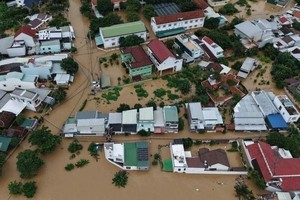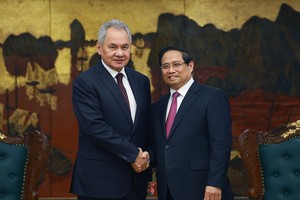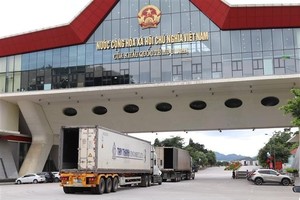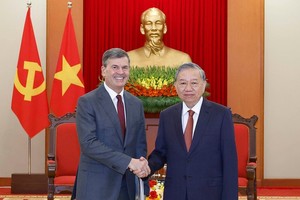More than 1,000 people were feared dead after a monster tsunami unleashed by a massive quake which wreaked destruction across northeast Japan and triggered an emergency at a nuclear power plant.
Prime Minister Naoto Kan said Saturday 45,000 residents living within 10 kilometres (six miles) of the plant must evacuate amid fears of a slight radiation leak, before stepping onto a helicopter to head for the area.
The atomic emergency came as the country struggled to assess the full extent of the devastation wrought by the massive tsunami triggered by the strongest quake ever recorded in Japan.
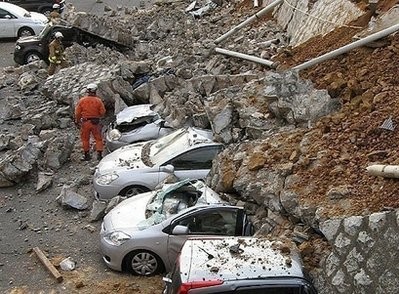
The towering wall of water generated by the 8.9-magnitude earthquake -- the seventh biggest in history -- pulverised the northeastern city of Sendai, where police reportedly said 200-300 bodies had been found on the coast. Kyodo News said the final death toll was likely to pass 1,000.
The 10-metre (33-foot) wave of black water sent shipping containers, cars and debris crashing through the streets of Sendai and across open farmland, while a tidal wave of debris-littered mud destroyed everything in its path.
At least 402 people were killed in the earthquake and subsequent tsunamis, police and press reports said.
The National Police Agency said 202 people had been confirmed dead and 673 were missing, with 991 injured, and a spokesman said this did not include the bodies reportedly found on the Sendai coast.
"The damage is so enormous that it will take us much time to gather data," an official at the agency told AFP.
Authorities said more than 3,000 homes were destroyed or swept away.
The tsunami left Rikuzen Takata, a coastal city of some 23,000 people, "almost in shambles," the national Fire and Disaster Management Agency said.
Video footage, taken by a resident from a hill, showed massive waves sweeping away houses, vehicles and other objects as they surged over the city from the sea.
Before the prime minister told residents around the Fukushima nuclear plant to evacuate, trade minister Banri Kaieda warned there could be a release of radioactive steam in an operation to relieve a pressure build-up after the plant's cooling system was damaged in the quake.
Nuclear plant operator Tokyo Electric Power said Saturday a second of its atomic plants was experiencing reactor cooling problems, Kyodo News reported.
Japan's network of advanced nuclear power plants are designed to shut down as soon as the earth shakes in one of the world's most quake-prone countries.
More than eight million homes lost power, mobile and landline phone systems broke down for many and gas was cut to more than 300,000 homes, meaning many people could not heat their dark homes during a terrifying and cold night.
Japan's military mobilised thousands of troops, 300 planes and 40 ships for the relief effort.
An armada of 20 naval destroyers and other vessels headed for the devastated Pacific coast area of Honshu island, while air force jets flew reconnaissance missions.
Leading international offers of help, President Barack Obama mobilised US military might to provide emergency aid after the disaster which he described as "simply heartbreaking."
The United States, which has nearly 40,000 military personnel in Japan, has ordered a flotilla including two aircraft carriers and support ships to the region to provide aid following the tsunami.
The towering wave set off alerts across the Pacific, sparking evacuations in Hawaii and on the US West Coast, and devastating at least one California port.
Chile said it was evacuating coastal areas and Ecuador's state oil company announced it had suspended crude oil exports due to risks posed by the tsunami.
A Japanese ship with 100 people aboard was reportedly swept away, several trains missing and a dam broke in the northeast prefecture of Fukushima, with homes washed away.
"It was the biggest earthquake I have ever felt. I thought I would die," said Sayaka Umezawa, a 22-year-old college student who was visiting the port of Hakodate, which was hit by a two-metre wave.
The quake, which hit at 2:46 pm (0546 GMT) and lasted about two minutes, rattled buildings in greater Tokyo, the world's largest urban area and home to some 30 million people.
Millions who had earlier fled swaying buildings in the capital were left stranded in the evening after the earthquake shut down the city's vast subway system.
The government urged people to stay near their workplaces rather than risk a long walk home as there was major disruption to air travel and bullet train services.
The tsunami also submerged the runway at Sendai airport, while a process known as liquefaction, caused by the intense shaking of the tremor, turned parts of the ground to liquid.
Hours after the quake struck, TV images showed huge orange balls of flame rolling up into the night sky as fires raged around a petrochemical complex in Sendai.
A massive fire also engulfed an oil refinery near Tokyo as the quake brought huge disruption to Japan's key industries.
The Bank of Japan said it would do its "utmost" to ensure the stability of financial markets.
Major manufacturers including Toyota, Nissan and Sony were forced to suspend production at some sites, raising short term concerns for the nation's economic growth.
The first quake struck just under 400 kilometres (250 miles) northeast of Tokyo, the US Geological Survey said. It was followed by more than 70 powerful aftershocks, one as strong as 7.1.
"We were shaken so strongly for a while that we needed to hold on to something in order not to fall," said an official at the local government of the hardest-hit city of Kurihara in Miyagi prefecture.
"We couldn't escape the building immediately because the tremors continued... City officials are now outside, collecting information on damage."
Japan sits on the "Pacific Ring of Fire" and Tokyo is in one of its most dangerous areas, where three continental plates are slowly grinding against each other, building up enormous seismic pressure.
The government has warned of a 70 percent chance that a magnitude-eight quake will strike within the next 30 years in the Kanto plains, home to Tokyo's vast urban sprawl.
The last time a "Big One" hit Tokyo was in 1923, when the Great Kanto Earthquake claimed more than 140,000 lives, many of them in fires.
In 1995 the Kobe earthquake killed more than 6,400 people.
More than 220,000 people were killed when a 9.1-magnitude quake hit off Indonesia in 2004, unleashing a massive tsunami that devastated coastlines in countries around the Indian Ocean.
Small quakes are felt every day somewhere in Japan and people take part in regular drills at schools and workplaces to prepare for a calamity.




